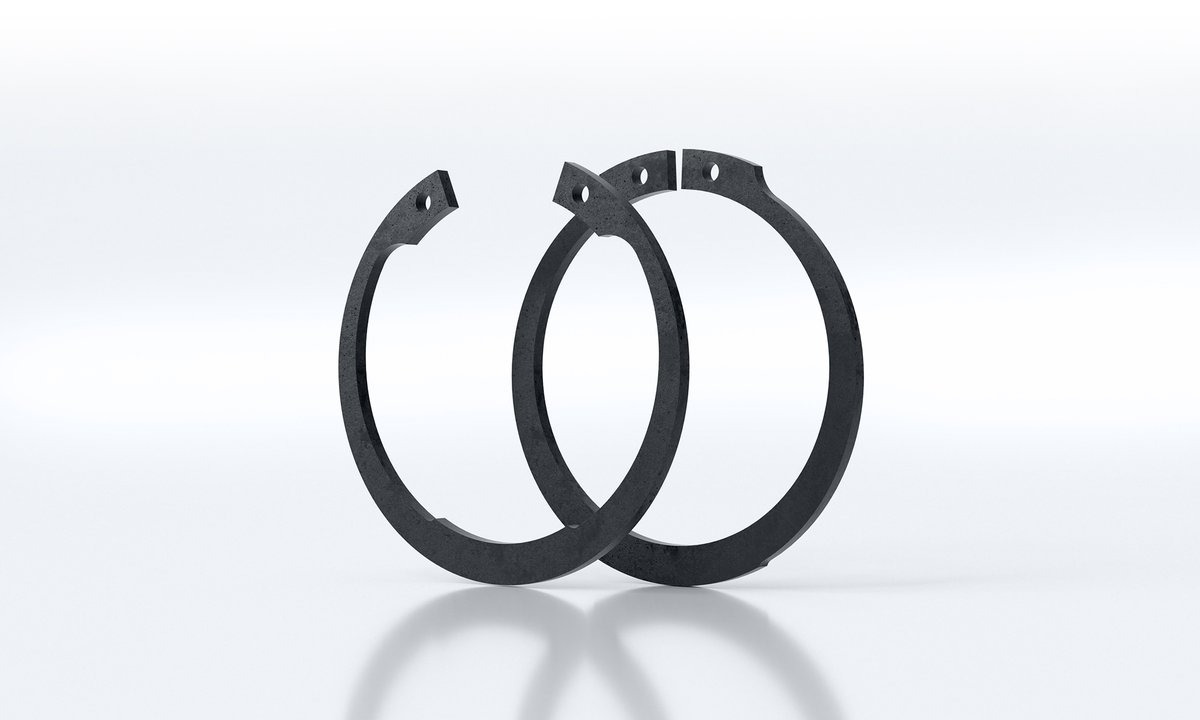- Products
- Technology
- Company
- Career
- Services
- Contact
ASSEMBLY OF RETAINING RINGS AND CIRCLIPS
Fasteners for simple installation
Like every component of a machine, retaining rings and circlips must be professionally assembled to fulfill their function and to securely connect machine parts.
Often the ring is subjected to much greater stress during assembly than during actual machine operation. This is why repeated improper installation causes damage to the ring or the groove.
Axially-mountable retaining rings
Axially-mountable retaining rings are equipped with assembly holes and are fitted or dismantled using special pliers. The suitable tools for the respective ring shape and size are listed in our data charts.
Deformation and bending stress
The elastic deformation of retaining rings during assembly leads to very high bending stresses. For this reason, the following applies:
During assembly, a retaining ring should be expanded or closed only to the extent necessary to pass over the shaft or into the bore. The shaft and bore must be of the same nominal diameter as the ring.
This rule applies particularly to rings made of materials with lower elastic yield or yield point such as bronze and corrosion-resistant steels. Overstressing during assembly leads to plastic deformations with the result that rings fit loosely or without adequate preload in the groove.
Stress on bore and shaft rings
Regardless of material and condition, bore rings should only be closed just enough to allow insertion into the bore.
To avoid overexpansion, tools with a limitation should be used when mounting shaft rings. Since the rigid grip rings are particularly at risk of overexpansion, the appropriate pliers are generally equipped with limiting screws.
Taper assembly of axially-mountable rings
For axially-mountable retaining rings, which are not equipped with assembly holes, taper assembly provides reliable protection against overstressing. To this end, slide the ring onto a taper by using a pressure pin or a pressure sleeve and insert into the groove.
Mounting of circlips
As a general rule, snap rings/circlips should be mounted using the above-described taper assembly method. Circlips with pointed ends for shafts (type SW up to 38 mm nominal diameter) can also be assembled using circlips pliers and, to some extent, can also be dismantled with them. Dismantling circlips, however, poses great problems, particularly in the case of smaller and relatively rigid rings, as they must be levered out of the groove.
Assembly of other retaining rings
Seeger-L-rings and Seeger-W-rings must be fitted on the shaft, or inserted in the bore, using pliers and then pressed on with a bush or drift until they snap into the groove.
Seeger circular self-locking rings for shafts or bores must be assembled using special bushes or drifts.
Radially-mountable SEEGER rings
Assembly-friendly
The assembly of radially-mountable SEEGER rings is particularly simple and cost-effective, since no special tools are required here.
The Seeger rings, types RA and H, are mounted simply by pushing into the shaft groove.
IMPORTANT NOTE:
SEEGER rings supplied loose in cartons or bags tend to become entangled by movements during transport. This may not only cause the rings to bend during removal, but also take considerably longer to unpack.
We therefore recommend a delivery in a stacked form.
Our technical advisors will be happy to help you with any questions you may have.
